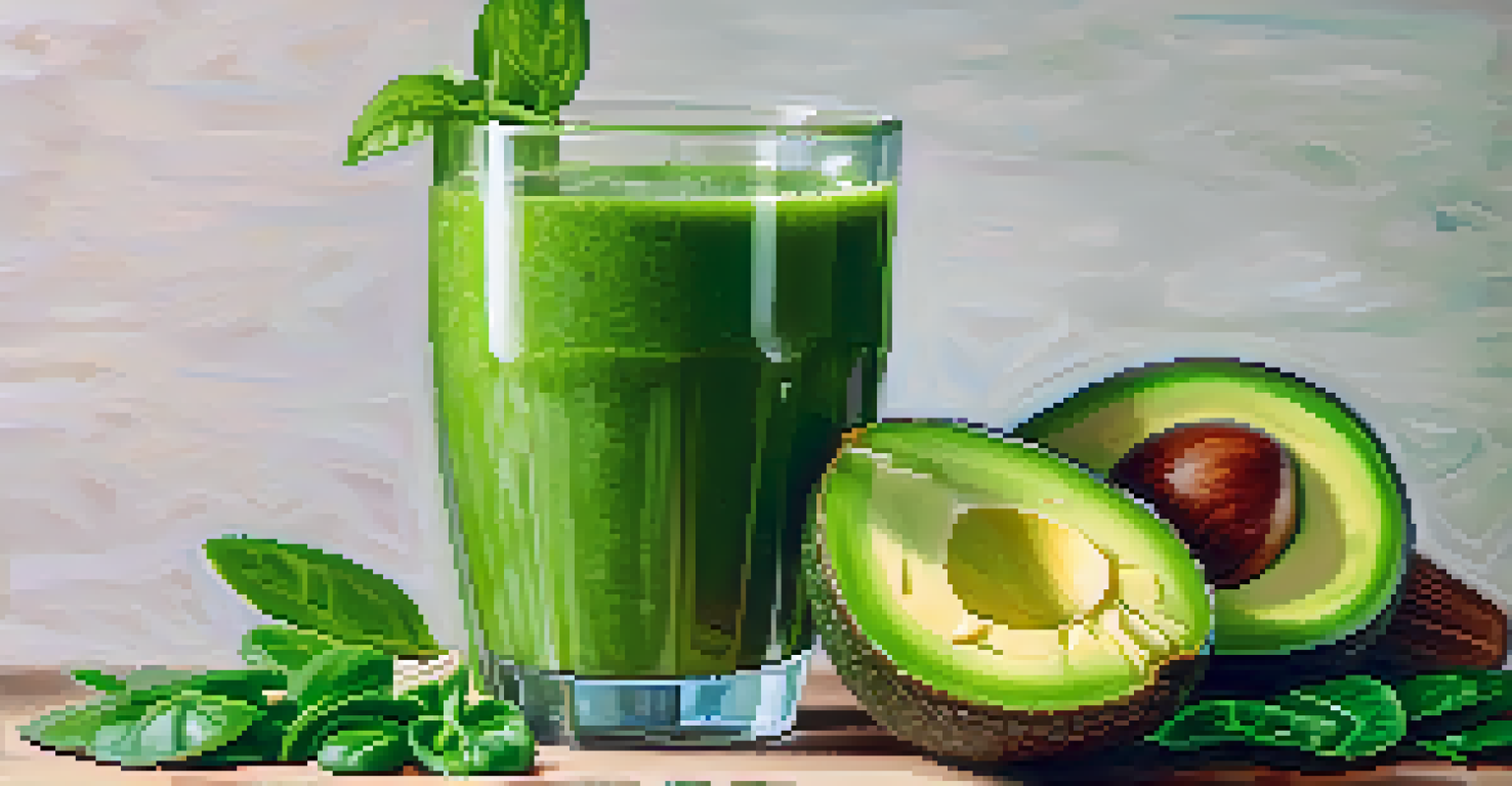How Raw Food Diets Promote Faster Recovery for Athletes

Understanding Raw Food Diets: The Basics
A raw food diet consists primarily of unprocessed, uncooked foods, emphasizing fruits, vegetables, nuts, and seeds. This approach aims to preserve the natural enzymes and nutrients that cooking can destroy. For athletes, this means consuming high-quality, nutrient-dense foods that fuel their bodies effectively.
Let food be thy medicine and medicine be thy food.
The idea behind a raw food diet is that by eating foods in their natural state, individuals can optimize their health and energy levels. This can be particularly beneficial for athletes who need to recover quickly after intense training sessions. The focus on whole foods helps ensure they’re getting a rich supply of vitamins, minerals, and antioxidants.
Moreover, the raw food lifestyle often encourages hydration through high-water-content foods, such as fruits and vegetables. Staying hydrated is crucial for recovery, as it aids in reducing muscle soreness and fatigue. By incorporating a variety of raw foods, athletes can support their overall well-being and recovery processes.
Nutrient Density: Fueling Athletic Recovery
One of the standout benefits of a raw food diet is its impressive nutrient density. Raw fruits and vegetables are packed with essential vitamins and minerals that promote recovery and overall health. For instance, foods like spinach and kale are rich in iron, which is vital for oxygen transport in the body, enhancing athletic performance.

Additionally, raw foods are often high in antioxidants, which help combat oxidative stress caused by intense exercise. This stress can lead to muscle fatigue and longer recovery times. By consuming a variety of colorful fruits and vegetables, athletes can boost their antioxidant intake, helping their bodies recover more efficiently.
Raw Foods Boost Athletic Recovery
A raw food diet, rich in fruits, vegetables, nuts, and seeds, provides essential nutrients that help athletes recover faster after intense training.
Incorporating raw nuts and seeds into the diet can also provide healthy fats and protein, crucial for muscle repair and recovery. These nutrient-rich foods support the body’s healing processes, ensuring athletes can bounce back faster after strenuous workouts.
Hydration and Its Impact on Recovery
Hydration plays a pivotal role in athletic recovery, and a raw food diet can help maintain optimal fluid levels. Many raw foods, particularly fruits like watermelon and oranges, have high water content, which contributes to overall hydration. Staying well-hydrated helps to reduce muscle cramping and supports joint health.
You are what you eat, so don't be fast, cheap, easy, or fake.
When athletes consume hydrating raw foods, they not only replenish fluids but also replenish electrolytes naturally. Foods like coconut water and certain fruits provide essential minerals like potassium and magnesium, vital for muscle function. This natural approach to hydration can lead to quicker recovery times.
Moreover, adequate hydration aids in flushing out toxins and reducing inflammation. Both of these factors are crucial for athletes looking to recover quickly and efficiently. A raw food diet, with its emphasis on hydrating foods, can significantly enhance an athlete’s post-exercise recovery.
Reducing Inflammation Through Diet
Inflammation is a natural response to exercise, but excessive inflammation can hinder recovery. Raw foods, particularly fruits and vegetables, are rich in anti-inflammatory compounds that help mitigate this response. Foods like berries and leafy greens can assist in reducing muscle soreness and swelling after workouts.
By incorporating a variety of raw foods into their diet, athletes can provide their bodies with the nutrients needed to combat inflammation. For example, omega-3 fatty acids found in flaxseeds and walnuts can further help reduce inflammation, supporting faster recovery times. This is crucial for athletes who train hard and need to be in peak condition.
Hydration Enhances Recovery Times
Incorporating high-water-content raw foods into a diet aids in hydration, reducing muscle soreness and inflammation for quicker recovery.
Additionally, a raw food diet is generally lower in processed sugars and unhealthy fats, which can exacerbate inflammation. By opting for whole, unprocessed foods, athletes can create an environment in their bodies that promotes healing and reduces recovery time.
The Role of Enzymes in Recovery
Raw foods are rich in natural enzymes that aid in digestion and nutrient absorption. These enzymes can help athletes break down food more efficiently, ensuring they get the maximum benefit from their meals. This is particularly important for muscle recovery, as proper digestion is key to nutrient delivery.
When athletes consume cooked foods, many of these beneficial enzymes are destroyed by heat, potentially leading to less efficient digestion. This can result in slower recovery times as the body struggles to absorb the nutrients it needs. By focusing on raw foods, athletes can enhance their digestive health and overall recovery.
Moreover, these enzymes can also assist in reducing muscle soreness and improving overall energy levels. The quicker the body can digest and absorb nutrients, the faster athletes can recover and prepare for their next challenge.
Practical Tips for Athletes Transitioning to Raw Foods
Transitioning to a raw food diet may seem daunting, but it can be done gradually. Athletes can start by incorporating more raw fruits and vegetables into their meals while slowly reducing cooked foods. Smoothies and salads are excellent ways to begin, as they can be packed with a variety of raw ingredients.
Planning meals is also crucial for athletes adopting a raw food diet. Having ready-to-eat snacks, like raw nuts or energy balls made from dried fruits and seeds, can help maintain energy levels throughout the day. This ensures athletes have the fuel they need to recover effectively.
Anti-Inflammatory Benefits of Raw Foods
Raw foods are packed with anti-inflammatory compounds that can help alleviate muscle soreness and support overall recovery for athletes.
Lastly, staying educated about raw food options can make the transition smoother. There are countless resources available, from cookbooks to online communities, that can provide inspiration and support. By exploring new raw recipes, athletes can discover delicious ways to optimize their recovery through food.
Success Stories: Athletes Thriving on Raw Food Diets
Many athletes have embraced raw food diets and experienced remarkable results. For instance, some professional athletes report enhanced recovery times and improved performance levels after switching to a raw food lifestyle. Their success stories can serve as motivation for others considering this dietary change.
These athletes often share their experiences of feeling lighter and more energized, which can significantly impact training and competition. They attribute their improved recovery to the nutrient density and hydration benefits of raw foods. This firsthand insight can help demystify the raw food approach for those who might be skeptical.

Additionally, as more athletes publicly endorse raw food diets, the conversation around their benefits continues to grow. By sharing their journeys, they inspire others to explore how a raw food diet might help them achieve their athletic goals.